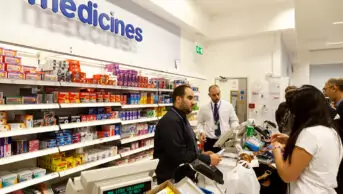
Shutterstock.com
Since December 2015, pharmacy news in England has been dominated by the government’s plans to cut community pharmacy contractual funding by £170m from October 2016. The announcement was made in a short letter from the Department of Health (DH) and NHS England and included little or no supporting evidence to justify the cuts.
In contrast, NHS hospitals, including hospital pharmacy, seem to have been better informed, in evidence terms, at least. Lord Carter’s 85-page report on efficiencies to be made across NHS acute hospitals dedicates five pages to hospital pharmacy.
Although many may baulk at the level of efficiencies sought by Carter — cuts of £800m, around four times higher than the DH’s announcement, a 10.9% reduction in medicines and hospital pharmacy costs compared with community pharmacy — they seem to have been met with less resistance by the hospital pharmacy sector. This could possibly be explained by the approach he took. He consulted widely, with 136 acute hospital trusts, including pharmacy departments. No such involvement was given to the community pharmacy sector ahead of the DH’s announcement.
Carter wants variation in total pharmacy and medicines costs to be reduced across NHS acute hospitals. The NHS spends around £6.7bn on medicines in hospitals and £0.6bn on hospital pharmacy services per year and employs more than 16,000 pharmacy staff, of which 7,000 are pharmacists.
Efficiency savings are not new to the hospital pharmacy sector. Take, for instance, the 2003 ‘A spoonful of sugar’ report back published by the Audit Commission, an independent public corporation that existed between 1 April 1983 and 31 March 2015. Carter’s review is part of a wider drive by the NHS to identify potential savings. It looks at a range of hospital activities, including optimising clinical and non-clinical resources across the patient pathway.
One of the primary recommendations Carter makes is that hospital trusts should develop plans by April 2017 to ensure hospital pharmacies increase pharmacist prescriber numbers and electronic prescribing by April 2020. To deliver this, Carter calls for at least 80% of hospital pharmacist resources to be directed to clinical rather than infrastructure services to put a greater focus on patients.
But the report does highlight how far we are from that figure, with around 55% of pharmacy time spent on what he calls “infrastructure services”, such as supply chain activities; advisory services, such as medicines information; and research and development in clinical trials. Although some hospital pharmacists are spending 80% of their time working in a clinical role, others have a longer way to go before they can achieve this.
Pharmacists are clinicians and are more than capable to take on clinical roles. But Carter seems keen on having more pharmacists qualify as prescribers to deliver medicines optimisation. This is a good thing, but additional training is required and pharmacists will need to take time out from work to train, which could place pressure on the rest of the team. Interestingly, Carter found a great variation — 2.5% to 71% — in the number of prescribing pharmacists as a percentage of the total number of pharmacists in a hospital. The average was found to be 14%.
Another Carter recommendation is to reduce stock-holding days from 20 days to 15 days. However, ensuring that patients receive the right medicines in good time is an important point to consider. Delays in receiving medicines on wards could be potentially dangerous.
The report also talks about “early signs” that community pharmacy may be willing to take on discharge medicines dispensing to improve the patient experience. This is already happening. Community and hospital pharmacies working closely together could help break down barriers between them, especially around the discharge of medicine and dealing with medicine reconciliation issues.
Overall, Carter’s review should be what hospital pharmacies need to improve efficiency and drive clinical practice forward.
You may also be interested in

Tackling the NHS drug budget: why we set up a regional collaboration for medicines value

Lack of joined-up working between pharmacy and general practice is ‘nonsensical’, says former BMA chair
